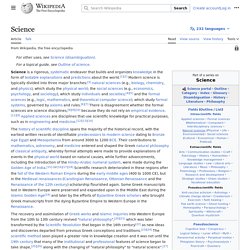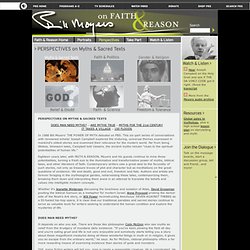

Taste. Profile on TED.com. Canine. Profile on TED.com. Lotto Lab : Home. Cat senses. A cat using its senses for exploration The large ears, eyes, and many vibrissae of the cat adapt it for low-light predation.

Cat senses are adaptations that allow cats to be highly efficient predators. Cats have acute sight, hearing and smell, and their sense of touch is enhanced by long whiskers that protrude from their heads and bodies. These senses allow cats to hunt effectively in dim light or at night. Sight[edit] The tapetum lucidum reflecting green in the pupils of a cat. A closeup of a cat's eye. Cats have a visual field of view of about 200°, compared to 180° in humans, but a binocular field (overlap in the images from each eye) narrower than that of humans. Cats have a third eyelid, the nictitating membrane, which is a thin cover that closes from the side and appears when the cat's eyelid opens. Cats often sleep during the day so they can "hunt" at night. Hearing[edit] It is a common misconception that all white cats with blue eyes are deaf.
Cat Dog Sensory Perception Witherly final.pdf (application/pdf Object) Alpha: Making the World's Knowledge Computable. Goals Wolfram|Alpha's long-term goal is to make all systematic knowledge immediately computable and accessible to everyone.

We aim to collect and curate all objective data; implement every known model, method, and algorithm; and make it possible to compute whatever can be computed about anything. Our goal is to build on the achievements of science and other systematizations of knowledge to provide a single source that can be relied on by everyone for definitive answers to factual queries. Wolfram|Alpha aims to bring expert-level knowledge and capabilities to the broadest possible range of people—spanning all professions and education levels. Synesthesia.
How someone with synesthesia might perceive (not "see") certain letters and numbers.

Synesthetes see characters just as others do (in whichever color actually displayed), yet simultaneously perceive colors as associated to each one. Synesthesia (also spelled synæsthesia or synaesthesia; from the Ancient Greek σύν syn, "together", and αἴσθησις aisthēsis, "sensation") is a neurological phenomenon in which stimulation of one sensory or cognitive pathway leads to automatic, involuntary experiences in a second sensory or cognitive pathway.[1][2][3][4] People who report such experiences are known as synesthetes.
Difficulties have been recognized in adequately defining synesthesia:[5][6] many different phenomena have been included in the term synesthesia ("union of the senses"), and in many cases the terminology seems to be inaccurate. A more accurate term may be ideasthesia. Characteristics[edit] What the Bleep Do We Know!? & What the Bleep!? - Down the Rabbit Hole. WHAT THE BLEEP DO WE KNOW.DOWN THE RABBIT HOLE. Neil Harbisson: I listen to color. Paradigm. In science and philosophy, a paradigm /ˈpærədaɪm/ is a distinct set of concepts or thought patterns, including theories, research methods, postulates, and standards for what constitutes legitimate contributions to a field.

Etymology[edit] Paradigm comes from Greek παράδειγμα (paradeigma), "pattern, example, sample"[1] from the verb παραδείκνυμι (paradeiknumi), "exhibit, represent, expose"[2] and that from παρά (para), "beside, beyond"[3] and δείκνυμι (deiknumi), "to show, to point out".[4] In rhetoric, paradeigma is known as a type of proof. The purpose of paradeigma is to provide an audience with an illustration of similar occurrences. This illustration is not meant to take the audience to a conclusion, however it is used to help guide them there.
The Oxford Dictionary of Philosophy attributes the following description of the term to Thomas Kuhn's The Structure of Scientific Revolutions:
Philosophy of science. Philosophy of science is a branch of philosophy concerned with the foundations, methods, and implications of science.

The central questions concern what counts as science, the reliability of scientific theories, and the purpose of science. This discipline overlaps with metaphysics, ontology and epistemology, for example, when it explores the relationship between science and truth. There is no consensus on many central problems in philosophy of science, including whether science can reveal the truth about unobservable things and whether scientific reasoning can be justified at all. In addition to these general questions about science as a whole, philosophers of science consider problems that apply to particular sciences such as biology or physics. Science. Systematic enterprise that builds and organizes knowledge The Universe represented as multiple disk-shaped slices across time, which passes from left to right Modern science is typically divided into three major branches that consist of the natural sciences (e.g., biology, chemistry, and physics), which study nature in the broadest sense; the social sciences (e.g., economics, psychology, and sociology), which study individuals and societies; and the formal sciences (e.g., logic, mathematics, and theoretical computer science), which study abstract concepts.

There is disagreement,[19][20][21] however, on whether the formal sciences actually constitute a science as they do not rely on empirical evidence.[22][20] Disciplines that use existing scientific knowledge for practical purposes, such as engineering and medicine, are described as applied sciences.[23][24][25][26] History Early cultures Classical antiquity. Bill Moyers on Faith & Reason . Perspectives . Myths and Sacred Tales. DOES MAN NEED MYTHS?

— ARE MYTHS TRUE — MYTHS FOR THE 21st CENTURY IT TAKES A VILLAGE — 150 FLOODS In 1988 Bill Moyers' THE POWER OF MYTH debuted on PBS. This six-part series of conversations with renowned scholar Joseph Campbell explored the enduring, universal themes expressed in mankind's oldest stories and examined their relevance for the modern world.